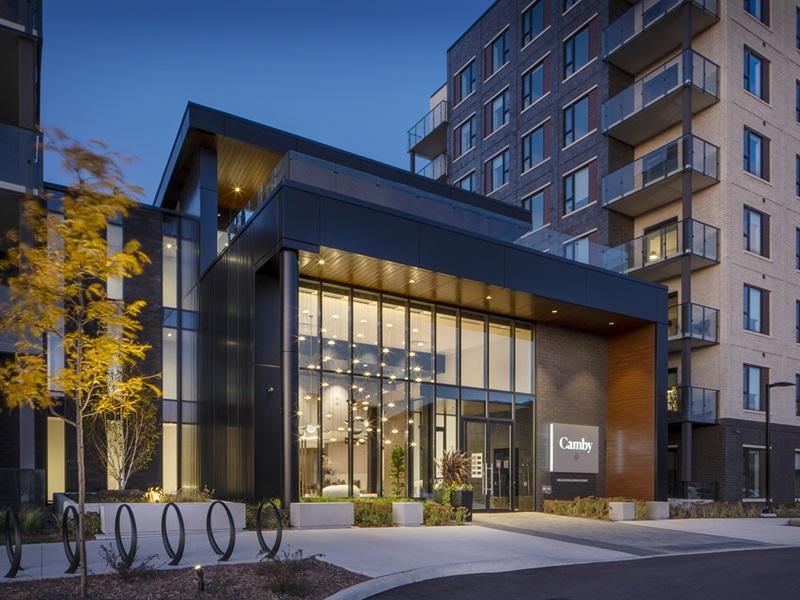What is it going to take to motivate people to return to small town Canada?
 I’ve written before about the hollowing out of communities across the country outside our handful of growing metropolises.
I’ve written before about the hollowing out of communities across the country outside our handful of growing metropolises.
Towns and smaller cities continue to suffer deaths by a thousand cuts. Anchor employers in various manufacturing verticals downsize and ship jobs overseas, while young people eager for opportunity and the amenities of the big city move away.
But does it have to be this way?
We don’t have to be in the office anymore
Last week, I discussed this topic with Don Wilcox, the new editor of RENX. Don raised a great point about how today’s digital technology gives us all we need to reverse the mass-migration to the big city. We have no shortage of video-conferencing and cloud-based collaboration tools that allow us to work from anywhere that we can find a high-speed Internet connection.
Case in point – one of my colleagues is about to move from Kanata/Stittsville to Perth. For those of you not familiar with the Ottawa area, that means he’s moving from a western suburb of the nation’s capital with a housing market that is heating up, to a small town about 45 minutes further away where his house-buying dollars stretch much, much further.
But even salaried employees working a more typical 9-5 workday can do the same. We’ve already seen big professional services firms here in town start to rationalize and economize their use of costly downtown real estate by providing fewer workstations than they have employees. This acknowledges the fact that at any one time, a certain percentage of staff are working outside the office. People share workspaces as needed.
The challenge to encourage more of this telecommuting behaviour is two-fold.
Attitudes have to catch up with technology
First, office employers must be more flexible in their expectations about how staff put in their time. The emphasis must be on an individual’s output and deliverables, rather than simply logging hours at a desk.
Second, people must be interested in living in a smaller community. There are many reasons why people flock to the city. The attraction of a vibrant social scene with lots of attractions and amenities close by is a big factor for millennials, for example. But there must also be a job to pay for that lifestyle, as well as good local schools for the children of the new generation of employees.
The cost of living this lifestyle, however, is growing increasingly untenable in our larger cities. I’ve read about a woman who works for a Vancouver company from her home in Calgary because she can’t afford to live in Vancouver. I know someone who recently sold a three-bedroom bungalow in Markham, a suburb of Toronto, for $1.2 million.
Aside from the staggering cost is the question of who could afford to pay such an inflated price for such a relatively modest home in the first place? We do hear stories of couples teaming up to buy a home, which can backfire if one couple then has to relocate to another city. I also expect many young people are turning to their parents and drawing on their equity to fund a first home purchase.
Convenience vs. cost
The issue of urban housing bubbles isn’t reserved for Toronto and Vancouver. Ottawa, modest as it may be by comparison, is seeing its share of hype drive home resale activity this spring. One example cited in the news recently involved a three-bedroom bungalow that listed for $347,000, attracted 21 offers in just five days and sold for $400,000.
At what point does the cost of urban living outstrip the appeal? It’s a vicious cycle – more people means more housing and the need for more infrastructure, the costs of which must in turn be recouped through higher property taxes, usage fees and development charges levied on those shiny new condo towers – costs that developers then pass on to consumers.
And let’s not overlook the inflationary impact of the land speculation that inevitably follows when a city announces that it is investing in new infrastructure. Take for example Ottawa with its multi-billion-dollar light rail system that’s under construction. Property adjacent to the new lines, or even better, a new station, gets a Midas touch.
Ride Vancouver’s rail system, where development is concentrated within five kilometres of the line. When the London Cross-Rail project was announced in the U.K., land values around the anticipated transit nodes rose.
Smaller communities trapped in a cycle of economic decline need to reconsider their place in the greater scheme of things. Many lie in the orbit of inflated housing markets, but lie too far away to be considered bedroom communities. They are, however, great for the work-from-home crowd that might have to head into the city only one day a week, if at all.
Small town Canada has some marketing to do
They key is to figure out how to market themselves, accept change, and sell the merits of that small-town lifestyle. My colleague moving to Perth has been surprised by how envious people are when they learn about his plan to relocate his family. It seems many people would rather not be stuck on a 50×100-foot property in the burbs, or paying hundreds of thousands of dollars for a 500-square-foot condo. They just feel they have to, because of the demands of career and their own reluctance to give up certain conveniences.
But consider this – consumer debt in Canada continues to set new record highs. Personal saving rates are falling and fewer Canadians have a firm plan in place to fund what promises to be a lengthy retirement. Giving up on a few conveniences now to reduce your cost of living could dramatically change your quality of life down the road.
Next, time, we’ll talk more about market cycles and bubbles.
To discuss this or any other valuation topic in the context of your property, please contact me at jclark@regionalgroup.com. I am also interested in your feedback and suggestions for future articles.







